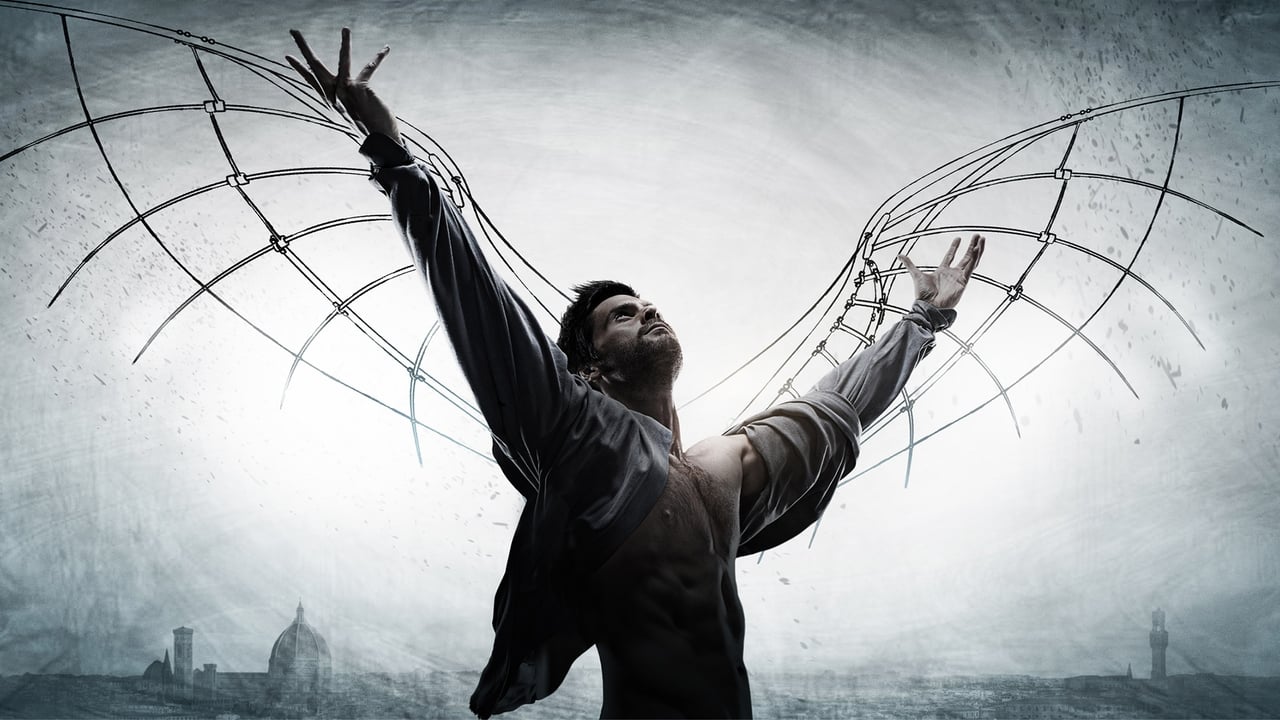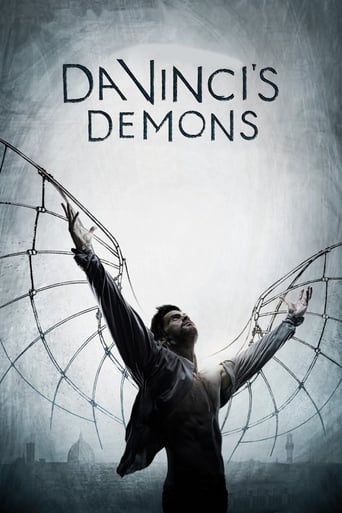

As you know, this TV series is about a part of Leonardo Da Vinci's life. Of Course producers can fill in the blanks of the uncertain issues of his life. But that doesn't mean they can change historical facts. Here is facts about Gedik Ahmet Pasha, II. Bayezid and Ottoman invasion of Otranto:About Gedik Ahmet Pasha: In 1479, when he was a commander of the Sanjak of Avlona, Sultan Mehmet II ordered him lead a siege force of between 10,000 and 40,000 troops in the siege of Shkodra. Later that year, the sultan ordered him to lead the Ottoman Navy in the Mediterranean Sea as part of the war against Naples and Milan. During his campaign, Gedik Ahmed Pasha conquered the islands of Santa Maura (Lefkada), Kefalonia, and Zante (Zakynthos). Since he had conquered Constantinople in 1453, Mehmed II saw himself as the inheritor of the Roman Empire and seriously considered the conquest of Italy to reunite Roman lands under his dynasty. As part of this plan, Gedik Ahmed Pasha was sent with a naval force to the heel of the Italian peninsula.After a failed attempt to conquer Rhodes from the Knights of St. John, Ahmed successfully took the Italian harbor city of Otranto in 1480. However, due to lack of food and supplies, he had to return with most of his troops to Albania in the same year, planning to continue the campaign in 1481.The death of Mehmed II prevented this. Instead, Ahmet sided with Beyazid II in the struggle for who would succeed the sultan. However, Beyazid II did not fully trust Ahmed and had him imprisoned and later killed on 18 November 1482 at Adrianople. As you can see, he did not died in the Otranto.About Bayezid II: Bayezid II ascended the Ottoman throne in 1481. Like his father, Bayezid II was a patron of western and eastern culture. Unlike many other Sultans, he worked hard to ensure a smooth running of domestic politics, which earned him the epithet of "the Just". Throughout his reign, Bayezid II engaged in numerous campaigns to conquer the Venetian possessions in Morea, accurately defining this region as the key to future Ottoman naval power in the Eastern Mediterranean. The last of these wars ended in 1501 with Bayezid II in control of the whole Peloponnese.During Bayezid II's final years, a succession battle developed between his sons Selim I and Ahmet. Ahmet unexpectedly captured Karaman, an Ottoman city, and began marching to Constantinople to exploit his triumph. Fearing for his safety, Selim staged a revolt in Thrace but was defeated by Bayezid and forced to flee back to the Crimean Peninsula. Bayezid II developed fears that Ahmet might in turn kill him to gain the throne, so he refused to allow his son to enter Constantinople.Selim returned from Crimea and, with support from the Janissaries, forced his father to abdicate the throne on 25 April 1512. Bayezid departed for retirement in his native Demotika, but he died on 26 May 1512 at Büyükçekmece before reaching his destination and only a month after his abdication. He was buried next to the Bayezid Mosque in Istanbul.As you can see, he did not died in the Otranto to. According to series, Bayezid is a cruel man who kills all non-Muslims. Let see:In July 1492, the new state of Spain expelled its Jewish and Muslim populations as part of the Spanish Inquisition. Bayezid II sent out the Ottoman Navy under the command of admiral Kemal Reis to Spain in 1492 in order to evacuate them safely to Ottoman lands. He sent out proclamations throughout the empire that the refugees were to be welcomed. He granted the refugees the permission to settle in the Ottoman Empire and become Ottoman citizens. He ridiculed the conduct of Ferdinand II of Aragon and Isabella I of Castile in expelling a class of people so useful to their subjects. "You venture to call Ferdinand a wise ruler," he said to his courtiers, "he who has impoverished his own country and enriched mine!" Bayezid addressed a letter to all the governors of his European provinces, ordering them not only to refrain from repelling the Spanish refugees, but to give them a friendly and welcome reception. He threatened with death all those who treated the Jews harshly or refused them admission into the empire. Moses Capsali, who probably helped to arouse the sultan's friendship for the Jews, was most energetic in his assistance to the exiles. He made a tour of the communities and was instrumental in imposing a tax upon the rich, to ransom the Jewish victims of the persecution.The Muslims and Jews of Al-Andalus (Iberia) contributed much to the rising power of the Ottoman Empire by introducing new ideas, methods and craftsmanship. The first printing press in Constantinople was established by the Sephardic Jews in 1493. It is reported that under Bayezid's reign, Jews enjoyed a period of cultural flourishing, with the presence of such scholars as the Talmudist and scientist Mordecai Comtino; astronomer and poet Solomon Ben Elijah Sharbiṭ ha-Zahab; Shabbethai Ben Malkiel Cohen, and the liturgical poet Menahem Tamar.
... View MoreFirst off, entire season is full of poor actors even main character "Leo" played by Tom is acting below average, not to say Laura ruined the entire season. This season loosely portrays Leonard Da Vinci at the same time its full of fiction. Its completely acceptable if there is realism in the fiction itself. Each episode Leo comes up with a new design and in few seconds there is a shot where is design is realized, it gets repetitive to a point when you just want to avoid this part. There is no point of focus, Sometimes he is wandering for her mother or book of leaves or he is saving Florence. To some up, If have watched seasons like Dexter, BB, Hannibal, etc than don't bother watching this one, the plot of this season is poor and not watchable.
... View MoreIf there ever was a story to be told it's got to be the lives of these extraordinary historical individuals, like Da Vinci. Da Vinci's Demons aims to tell us about a younger Da Vinci in a fantasy alternate history.We meet Da Vinci perhaps in his 20s working on his inventions in the wealthy and fiercely independent city of Florence ruled by the Medici family. Florence was dedicated to banking and the wealth made the rulers patrons of the arts and sciences. This was a time when Italy wasn't much of a country but a bunch of warring cities, and in the center of it all, the Vatican trying to exert power and control. By now the wicked Pope Sixtus sets his sights on Florence. He dispatches his just-as-wicked representative Count Riario to snoop around Florence while Da Vinci, always with his sidekicks Zo (Zoroaster) and Nico (none other than a young Niccolo Macchiavelli,) has to shift his interest toward the invention of arms. At the center of Vatican intrigue is a stunning operative, Lucrezia, whose allegiance is never clear.Season 1 focuses on this conflict between the Vatican and Florence. Da Vinci the artist and inventor will have to come to the rescue of the city with his inventions. But there's lots more going on. Da Vinci and the Vatican start looking for something called the Book of Leaves which is the source of all and ultimate knowledge. Various secret societies are also involved trying to manipulate things. These include the Sons of Mithras and the Labyrinth which are at war with each.Season 2 takes Da Vinci and his nemesis Riario to the Inca empire in search of the Book of Leaves and in the case of Da Vinci in search of traces of his mother. Florence continues to be threatened by the Vatican and its agents. We learn something interesting about the identity of the Pope. The season ends in a cliffhanger related to Da Vinci's mother just as the Turks are about to attack our group's holdout.In Season 3 the Ottoman empire threatens to take over Italy which forces all the erstwhile enemies (Lorenzo Medici, Da Vinci, the Pope) to join forces. The aim is to form a crusade to vanquish the enemy once and for all. The problem is that the Turks have a slew of advanced weapons--weapons which were conceived by Da Vinci, who is commissioned by the Vatican to find a mysterious killer. The battle between the two secret societies continues and Da Vinci finds himself in the middle of it.Da Vinci's Demons was perhaps the most erudite show on television combining political intrigue, religious intrigue, esotericism, action, drama. This was almost like an Umberto Eco novel brought to television. Each episode is nearly an hour long, a bit too long perhaps. A lot of time is focused on Florence politics and the Medicis, which I didn't find all that interesting. Season 1 no doubt was the strongest of all season. Here the writers had a lot to tell. Riario shines as one of the strongest character of the season, which includes even an appearance by Dracula himself. Season 2 surprised me with the best portrayal of the Incas I've seen. But to focus an entire season on a journey was a bit too much. Season 3 ran even more out of steam by setting the whole season in the midst of war. Perhaps an accurate portrayal of life during that era, but it just doesn't make for a good setting. Gone in season 3 for some reason was also the excellent nudity of the previous seasons.The all-British cast does a solid job. James Faulkner stands out as the evil and cynical Pope who has the luxury of playing it for laughs occasionally. Blake Ritson is excellent as Riario in S1, but he gets progressively lazier articulating his lines and in S3 he's just mumbling and whispering. Paul Rhys is also fun as Vlad the Impaler. Tom Riley's Da Vinci is an unusual lead character. He's not bombastically charismatic. Da Vinci is more of an introvert who in his moments of creativity disappears into himself. Laura Haddock and Carolina Guerra are unforgettable in their beauty.I would have been happy with 1 or 2 more seasons of this show, perhaps in a 45 minute format. It was canceled too soon and there's nothing like it on TV.
... View MoreDavid S. Goyer creates a fantasy take on the life of a young Leonardo Da Vinci (Tom Riley). His workshop is in Florence under the ruling House of Medici. There is family intrigue and challenges from outside including the evil Pope Sixtus IV. Da Vinci has an affair with Lorenzo de' Medici's mistress Lucrezia Donati. Count Girolamo Riario is a papal spy who is corrupted by the cult Sons of Mithras. Zoroaster da Peretola is a supportive friend. Da Vinci searches for a mythical Book of Leaves guided by the mysterious Al-Rahim.I was intrigued by the first season. I like the political fighting within Italy. I treated the Book of Leaves as a MacGuffin and nothing more. Vlad is a fun diversion. Then the MacGuffin turns into a real element. The more important it becomes, the less compelling the show becomes. Also the brooding melodramatic atmosphere starts to wear. When the show goes over to South America, it becomes one bridge too far. I do like his tank design in action but it doesn't have substance. It becomes fake history. I don't like the magic and mind reading either. The fantasy style is intriguing but the story sometimes suffers.
... View More